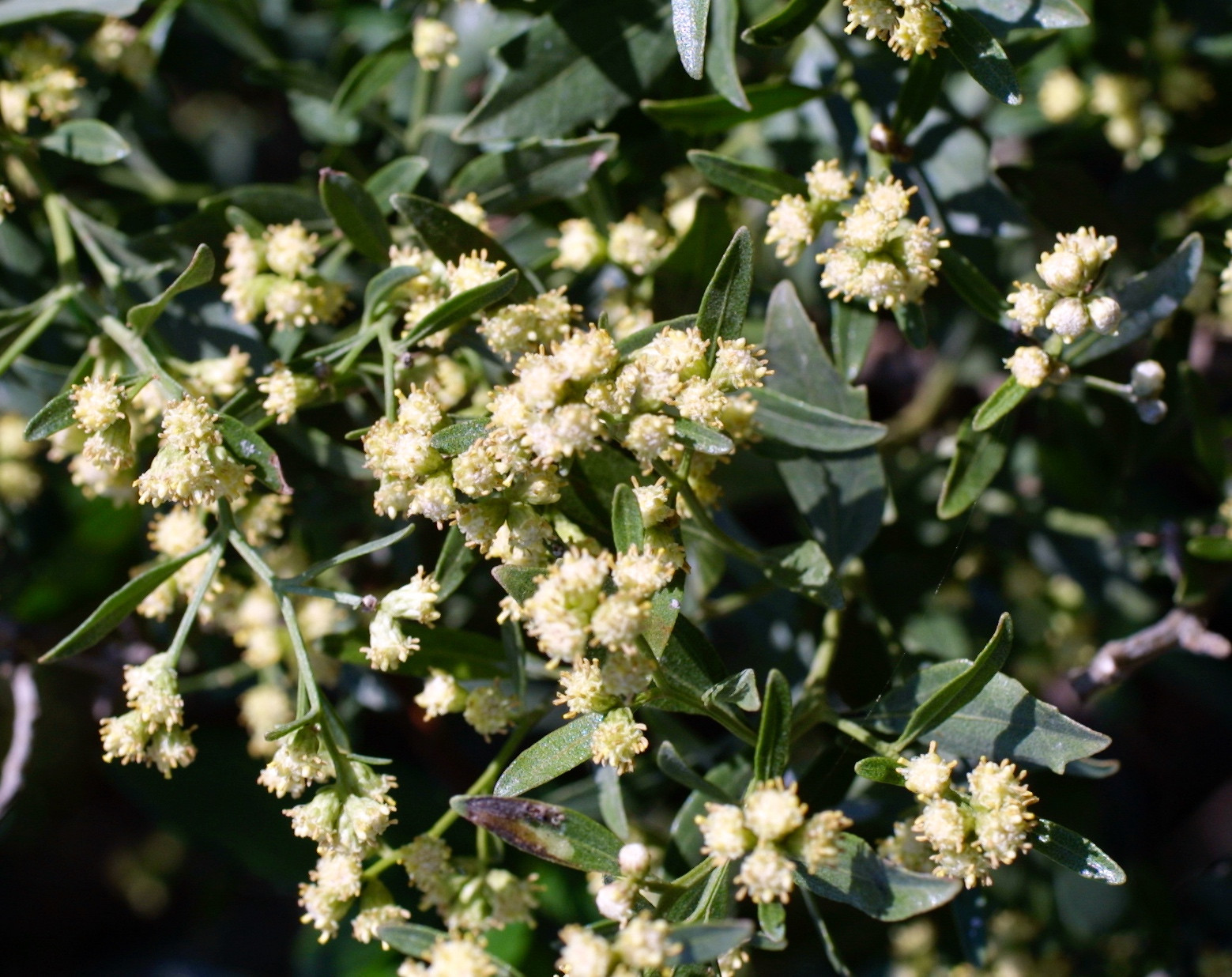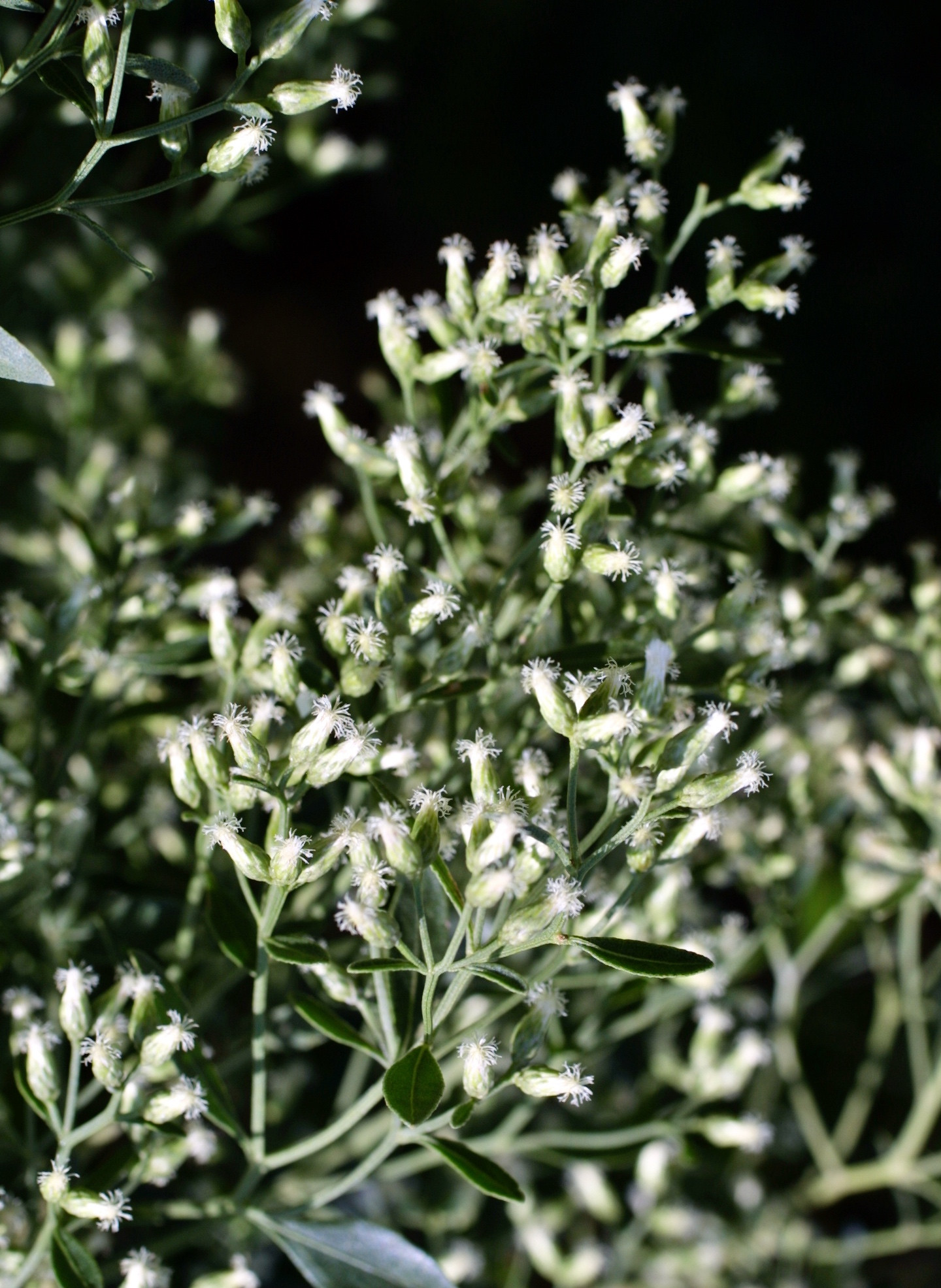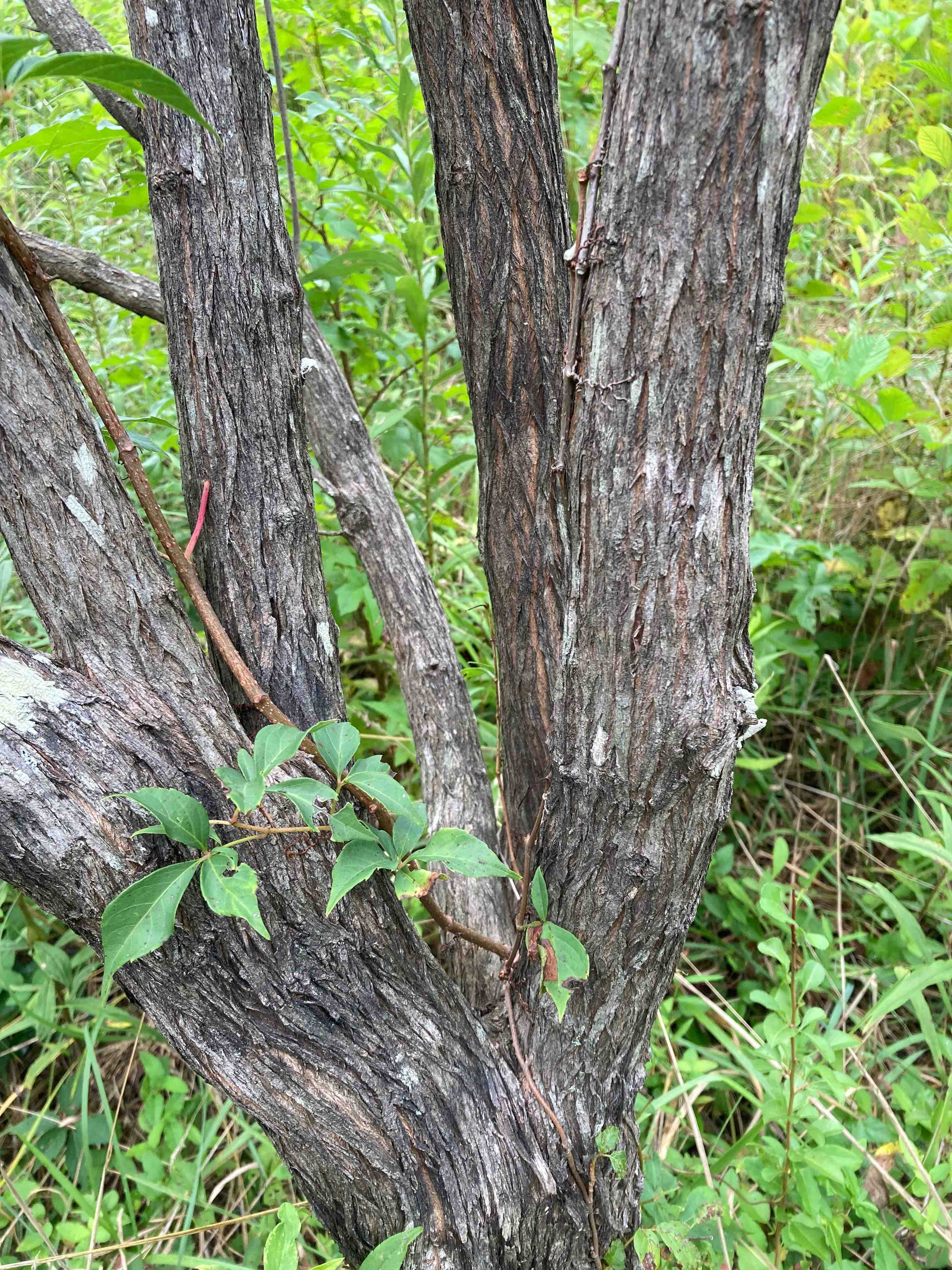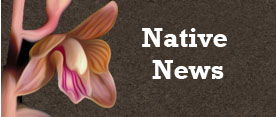NC Native Plant Society:
Plant Details
Baccharis halimifolia
Silverling, High-tide Bush, Mullet Bush, Groundsel Tree, Sea Myrtle
Scientific Name: |
Baccharis halimifolia |
|---|---|
Genus: |
Baccharis |
Species Epithet: |
halimifolia |
Common Name: |
Silverling, High-tide Bush, Mullet Bush, Groundsel Tree, Sea Myrtle |
Plant Type |
Shrub |
Life Cycle |
Perennial |
Plant Family |
Asteraceae (Aster Family) |
Native/Alien: |
NC Native |
Size: |
3-6 ft., 6-12 ft., 12-36 ft. |
Bloom Color(s): |
White, Yellow, Green |
Light: |
Sun - 6 or more hours of sun per day, Part Shade - 2 to 6 hours of sun per day |
Soil Moisture: |
Dry, Moist |
Bloom Time: |
August, September, October |
Growing Area: |
Mountains, Piedmont, Sandhills, Coastal Plain |
Habitat Description: |
Fresh and brackish marshes, marsh borders, hammocks, moist abused land, roadsides, ditches, old fields, and a wide variety of disturbed areas. Native and common to the NC coastal plain (primarily maritime and estuarine edges), but has invaded inland, especially along highways and the edges of cultivated fields; now a common non-native in the NC piedmont, rare in mountains. “B. halimifolia is becoming increasingly common inland, and can be an aggressive invader in sunny sites after silvicultural disturbance” (Weakley 2015). |
Leaf Arrangement: |
Alternate |
Leaf Retention: |
Semi-evergreen |
Leaf Type: |
Leaves veined, not needle-like or scale-like |
Leaf Form: |
Simple |
Life Cycle: |
Perennial |
Wildlife Value: |
Has some wildlife value |
Landscape Value: |
Not Recommended for home landscapes |
State Rank: |
S5: Secure (*Key) |
Global Rank: |
G5 - Secure (*Key) |
Notes: |
Dioecious (male and female flowers on separate plants); the flowers are not showy, but the mature seeds have silvery-white bristles and are quite showy in the fall (older people liken them to shaving brushes). |
|
Fluffy white seed clusters in November Orange County, NC
Bettina Darveaux |
|
|
Female flowers. Pender Co., NC
Lisa Lofland Gould |
|
|
Male flowers. Pender Co., NC
Lisa Lofland Gould |
|
|
The leaves are elliptical to rhombic in shape with small lobes and gray-green in color. Orange Co., NC
Bettina Darveaux |
|
|
Many branches arise from the short trunks. The bark is orange-brown when young, later gray with flat intersecting ridges and orangeish shallow furrows. Orange Co., NC
Bettina Darveaux |
|
Links: |
Vascular Plants of NC: https://auth1.dpr.ncparks.gov/flora/plant_list.php NC State Extension Gardener Plant Toolbox: https://plants.ces.ncsu.edu/find_a_plant/?q=Baccharis 700 Bird-friendly Plants for NC: https://nc.audubon.org/700 |
back to top
go to plant details search
go to plant images search
go to gallery home
back to Initial b Gallery
back to orchids
back to Carnivorous Plants
back to Trilliums








